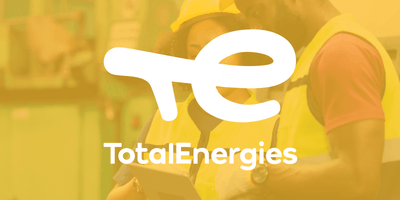In today's fast-changing and competitive business world, large organizations need to constantly learn and adapt to survive and thrive. That’s why large enterprises benefit immensely from becoming a learning organization.
What is a Learning Organization?
A learning organization is a company that facilitates the learning of its employees and continuously transforms itself to meet the challenges of the environment.
It is not simply a collection of individuals who learn on their own, but rather a system that fosters a culture of learning, collaboration, innovation, and performance improvement. A learning organization leverages the collective knowledge and experience of its employees to create value for its customers, stakeholders, and society.
How to Become a Learning Organization
How can a company become a learning organization? What are the steps and practices that enable an organization to learn faster and better than its competitors?
This guide will outline five steps that can help you transform your company into a learning organization.
Step 1: Develop a Shared Vision and Purpose
A learning organization starts with a clear and compelling vision and purpose that inspires and guides its workforce. A vision is a statement of what the company wants to achieve in the long term, while a purpose is a statement of why the organization exists and what value it creates for its customers and society.
A shared vision and purpose help to align the goals and actions of an organization and its members. They also provide a sense of direction and meaning for the learning efforts.
A shared vision and purpose answers the questions: What are we trying to accomplish? Why are we doing it? How does it benefit us and others?

Develop a shared vision and purpose by:
To develop a shared vision and purpose, employees should be involved in the process of creating and communicating them.
- Solicit employee input, feedback, and ideas, and make them part of the vision and purpose.
- Management should communicate with employees frequently and consistently, using different channels and formats, such as video, newsletters, announcements, and more.
- Organizations should make sure that everyone understands and embraces the vision and purpose, and can relate them to their own work and goals.
Step 2: Promote a Culture of Learning
A learning organization cultivates a culture of learning. This environment encourages and supports employees to share knowledge and learn continuously from their own experiences, each other, customers, competitors, experts, research, etc.
A culture of learning is characterized by:
Curiosity:
A learning organization fosters a sense of curiosity among its members. It encourages them to ask questions, seek new information, explore new possibilities, challenge assumptions, experiment with new ideas, etc.
Feedback:
Learning organizations value feedback as a source of learning. They provide regular and constructive feedback to employees on their performance, strengths, weaknesses, or opportunities. They also encourage members to seek feedback from others, such as peers, managers, and customers, and to use it for improvement.
Reflection:
A learning organization should promote reflection as a way of learning from experience. Encourage employees to pause and think about what they have done, what they have learned, and what they can do better next time. Provide time and space for reflection activities, such as debriefing sessions or after-action reviews.
Collaboration:
Facilitate collaboration as a means of learning from each other. A learning organization encourages its members to share their knowledge, skills, insights, and feedback with each other, and to work together on common goals and projects. Provide tools and platforms for collaboration, such as online communities, social networks, wikis, etc.
Innovation:
A learning organization stimulates innovation as a result of learning. It encourages employees to apply their learning and training to create new or improved products, services, processes, and solutions. Support innovation by providing resources, incentives, recognition, and protection for innovative ideas and initiatives.
To promote a culture of learning, companies should model and reward the behaviors and attitudes that support learning. Management can leverage the opportunity to demonstrate their own curiosity, feedback-seeking, reflection, collaboration, and innovation.
Organizations may benefit when they recognize and appreciate the learning efforts and achievements of employees. Celebrate their successes and failures as learning opportunities. Create a safe and supportive environment where people can learn without fear of judgment or punishment.
Step 3: Implement Effective Learning Practices
Implementing effective learning practices enables employees to acquire, share, and apply knowledge and skills. Learning practices are the methods and processes that facilitate learning at the individual, team, and organizational levels.

Some examples of learning practices are:
Training:
Companies provide training programs that help employees develop the knowledge and skills they need to perform their roles and tasks. Video is a preferred training method because it can help manage cognitive load, which is the amount of information that the learner can process at a given time, and promote active learning, which is the process of engaging the learner in meaningful activities that enhance their understanding and retention of the material.
Training can be formal or informal, online or offline, remote or not. Training should be aligned with the vision and purpose of the organization, and should be relevant, engaging, interactive, and practical.
Coaching:
Coaching services can help employees improve their performance and potential. Coaching can be provided by internal or external coaches, managers or peers, mentors, or experts. Coaching should be personalized, goal-oriented, supportive, and challenging.
Mentoring:
Establishing mentoring relationships can help employees learn from the experience and wisdom of others. Mentoring can be formal or informal, one-to-one or group-based, short-term or long-term. Regardless of implementation strategy, mentoring should always be based on mutual trust, respect, and learning goals.
Knowledge Management Systems:
Learning organizations implement knowledge management systems that help employees - and customers - capture, store, access, and reuse knowledge. Knowledge management systems are tools and processes that enable the creation, organization, dissemination, and application of knowledge.
Knowledge management systems can include Knowledge Bases, databases, repositories, portals, search engines, wikis, blogs, podcasts, and more. They should be user-friendly, reliable, secure, and up-to-date.
To implement effective learning practices, organizations must assess the learning needs and preferences of employees. Design and deliver learning solutions that meet those needs and preferences. Evaluate the effectiveness and impact of learning solutions and make improvements as needed. Make sure to integrate learning solutions with business processes and systems.
Step 4: Leverage Technology for Learning
A learning organization leverages technology for learning to enhance the quality and efficiency of its learning practices. Technology for learning refers to the devices, software, platforms, and applications that support learning activities.
Technology for learning can enable:
Accessibility:
Technology can make learning more accessible to more people at more times and places. Tech can overcome geographical, temporal, and logistical barriers to learning, and accommodate different learning styles, preferences, and needs.
Interactivity:
Technology can make learning more interactive and engaging, provide feedback, guidance, and support to learners. It can also enable collaboration, communication, and socialization among learners and instructors.
Personalization:
Leverage the option to make learning more personalized and customized with technology. Allow learners to choose their own learning paths, pace, and content while adapting to the learners' performance, progress, and preferences.
Analytics:
Make learning more measurable and actionable by collecting, analyzing, and visualizing data on learners' behavior, performance, and outcomes. Tech can provide insights and recommendations to learners and instructors on how to improve their learning.
To leverage technology for learning, you need to select and use the appropriate technology tools that suit your learning objectives and context, like Speach! Ensure that technology tools are compatible, accessible, reliable, secure, and user-friendly. Provide technical support and training to employees on how to use the technology tools effectively.
Step 5: Foster a Growth Mindset
A learning organization fosters a growth mindset among its members that enables them to embrace learning as a lifelong journey. A growth mindset is a belief that one's abilities and talents can be developed through effort, feedback, and practice. It contrasts with a fixed mindset, which is a belief that one's abilities and talents are innate and fixed.

A growth mindset helps to:
Motivate:
Employees are motivated to pursue challenging goals, seek new opportunities for learning, and persevere in the face of difficulties and setbacks.
Improve:
Employees improve their performance and potential by seeking feedback, reflecting on their mistakes, and applying their learnings.
Innovate:
Employees can innovate freely by experimenting with new ideas, taking risks, and learning from failures.
To foster a growth mindset, management should model and promote the behaviors and attitudes that reflect a growth mindset. Praise employees for their efforts, strategies, and progress, rather than their abilities or outcomes. Encourage employees to view challenges as opportunities for learning and growth, rather than threats or obstacles. Help them learn from their failures and mistakes, rather than avoid or hide them.
Conclusion
Becoming a learning organization is not a one-time event or a quick fix. It is a continuous process that requires commitment, leadership, and action from everyone in the organization. By following the five steps outlined in this guide, you can start your journey towards becoming a learning organization that can learn faster and better than your competitors.
Do you want to learn more about how to become a learning organization? Check out Speach today to create engaging and effective learning videos!





